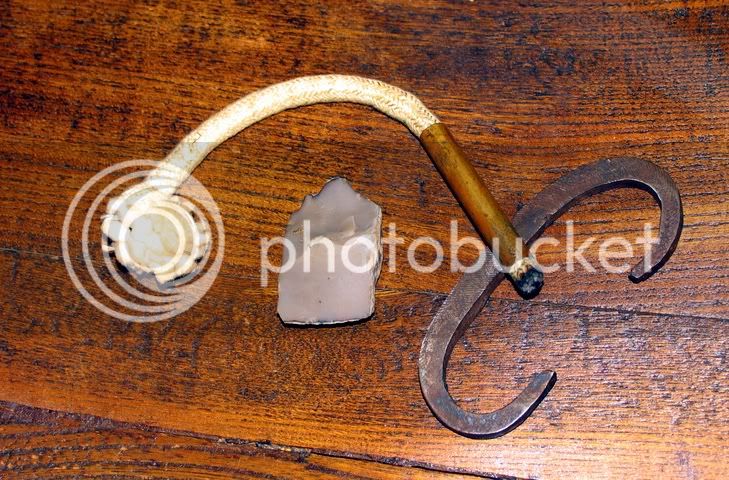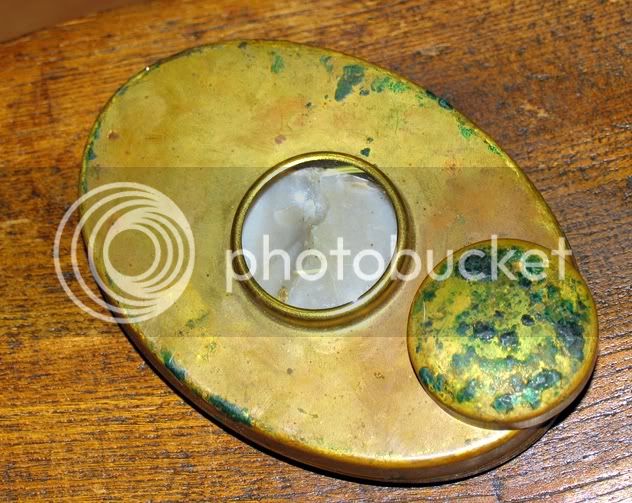It takes some time to learn how much you have to blow on an ember to get it to grow, and how close you have to hole the nest of tinder to the char clothe to get the heat from the burning ember to transfer that heat to the tinder. Humidity affects how well both the char cloth and your tinder will burn.
On damp days,( like now), I recommend( and do) using an extra piece or two of char clothe, to place behind and next to the piece with any kind of ember. This give you more material that is thin, and dry to blow the ember into to get some real HEAT.
DO NOT HANDLE your hemp, jute, or other tinder alot in humid conditions, or any time its hot enough that your hands are sweating. The perspiration from your own hands is enough to dampen the tinder so its next to impossible to get to light. BTDT.
If the sun is out, place the tinder on a rock, or bare log, or piece of bark wide enough to hold it, and let it heat up in the sun's rays. Pick a spot to put the tinder that is already out in the sun- not something you pull from shadows, or from under leaves. You want a DRY SURFACE to put your tinder on- not something that is even more wet than your tinder.
Take your time. When you begin to start your fire, the tinder should be hot to your hands. ( Not hot enough to burn, but hot enough to notice.) The heat will dry the humidity, and any sweat from your hands out of the tinder. Heat rises, and with it goes the humidity.
Don't over handle your char cloth, for the same reason. You spent a lot of time Making it, so its very dry, to catch sparks, so don't ruin it by sweating all over it.
When you go to blow the embers into you tinder nest, put the nest above your face and eyebrows. blow up into it from underneath. cup your hands around the nest to contain the heat. Trust me, you will drop the tinder nest faster than it can burn your hands.
I think the hardest part of starting a fire with primitive skills and materials is learning to be prepared to BUILD a fire once you have the tinder burning. That means, picking, and sorting sticks that are bone dry( they should pass the snap test: if they don't snap when you bend them, they are too wet to use.) and then laying them out within reach near the place you choose to make the fire.
A lot of people have no idea where to search and find dry tinder in the woods, or anywhere else. I once started a fire for my best friend in his fireplace, using tinder I obtained out in his flower beds and yard after 3 days of constant rain. I found dead twigs under and in the back side( away from the sun) of his yew bushes in his front flowerbeds. In his backyard, I found dead branches broken off during the last spring stormes, and still hanging in the limbs and branches of several trees. They had been wetted by the three days of rain, but the winds were drying them off, and they were dry as bones on the insides, and passed the "snap test" easily. Those branches provided me with sticks that were about 1 foot long, and 1/2 -3/4" in diameter, and they were dry.
I threw sparks with my flint and steel into some char cloth, then blew that ember into my tinder, which was made from a length of hemp rope I coil in my fire starting kit for this purpose. From there I began building the tipi with toothpick thick sticks from the Yew bushes. The sap in these sticks also burns hot. From there on, it was simply a matter of building the tipi on his hearth, going up on thickness of sticks, until I was putting my 3/4" sticks on the final tipi. I pushed the entire mass of burning sticks into the fireplace and under an Osage log that was a fork in a tree, and had been impossible to split further, and even more impossible to light the night before with newspapers. The log was burning within 10 minutes of pushing my tipi under it. Of course, all the attempts with newspapers the night before had helped to dry the log out, making it easier to get to burn, but that tipi I built surely was not going to allow that log to say" NO" anymore!
You will want to build a tipi of sticks, around the burning tinder, starting with the smallest sticks you have chosen( 1/16" or smaller. The small dry sticks will catch fire the quickest. They are surrounded in the tipi with larger sticks, 1/8", then 1/4" , etc. until you have one inch and larger branches being set on fire by a very hot interior tipi of smaller sticks. From those one inch diameter sticks, you should be able to light just about anything larger, within reason. That original tipi of small sticks should be completely consumed by the fire, and replaced with white hot coals.
Once you have a good hot fire going with large, dry logs, you can dry out wet logs by lining them around or next to the fire. That prepares you to build a new fire the next day, or for the next meal. All you need is more dry tinder, and more char cloth to begin your next fire.
Practice this many times in your backyard, or when camping so that one day you feel comfortable leaving lighter fluid, and matches and cigarette lighters, etc. at home. When you get good enough at these skills to not need matches to start a fire, no matter the weather, then, and ONLY THEN, are you prepared to go out into wilderness conditions and survive with tools you make, or use to make fire. As you master one technique, you will want to learn even more primitive techniques. I learned to use flint and steel to start fired more than 30 years ago. Since then, I have learned to use a bow and drill, and how to make my bow and drill from wood and rocks I can find in the forests. I have mastered my "Fire Piston", too. Next on the list is the hand drill, and the fire saw, as well as other friction techniques. :shocked2: :thumbsup:








